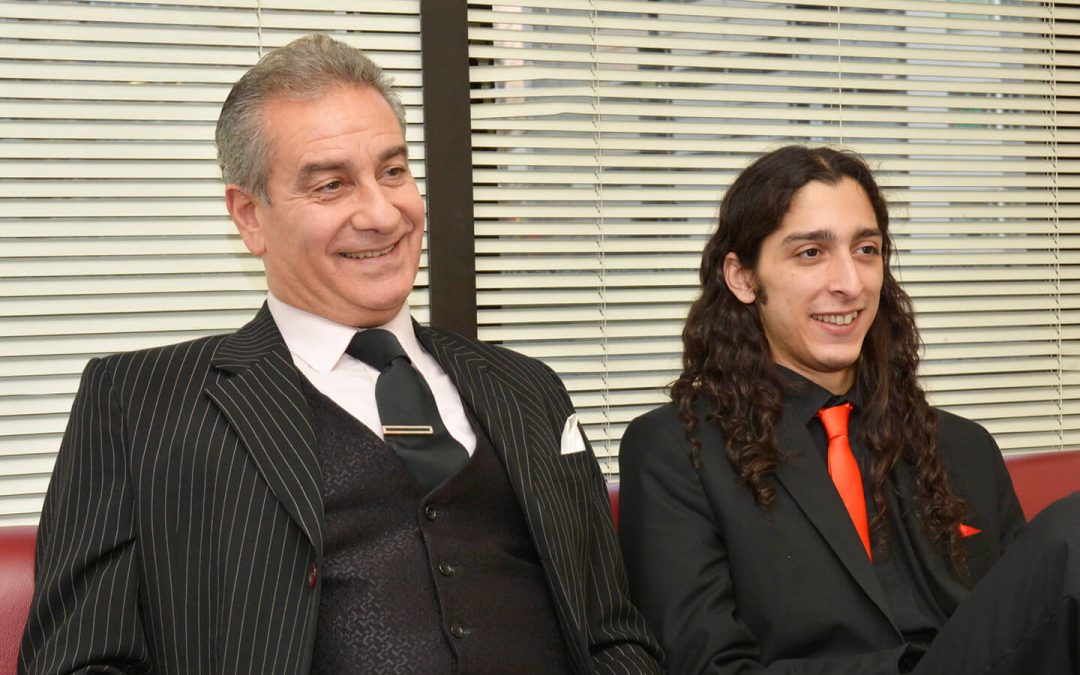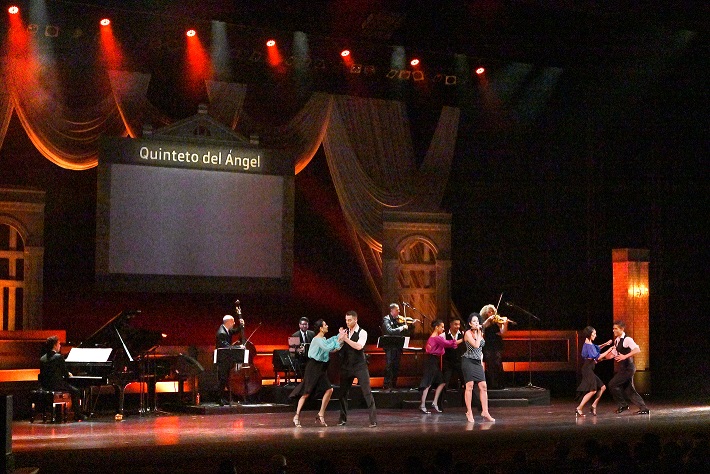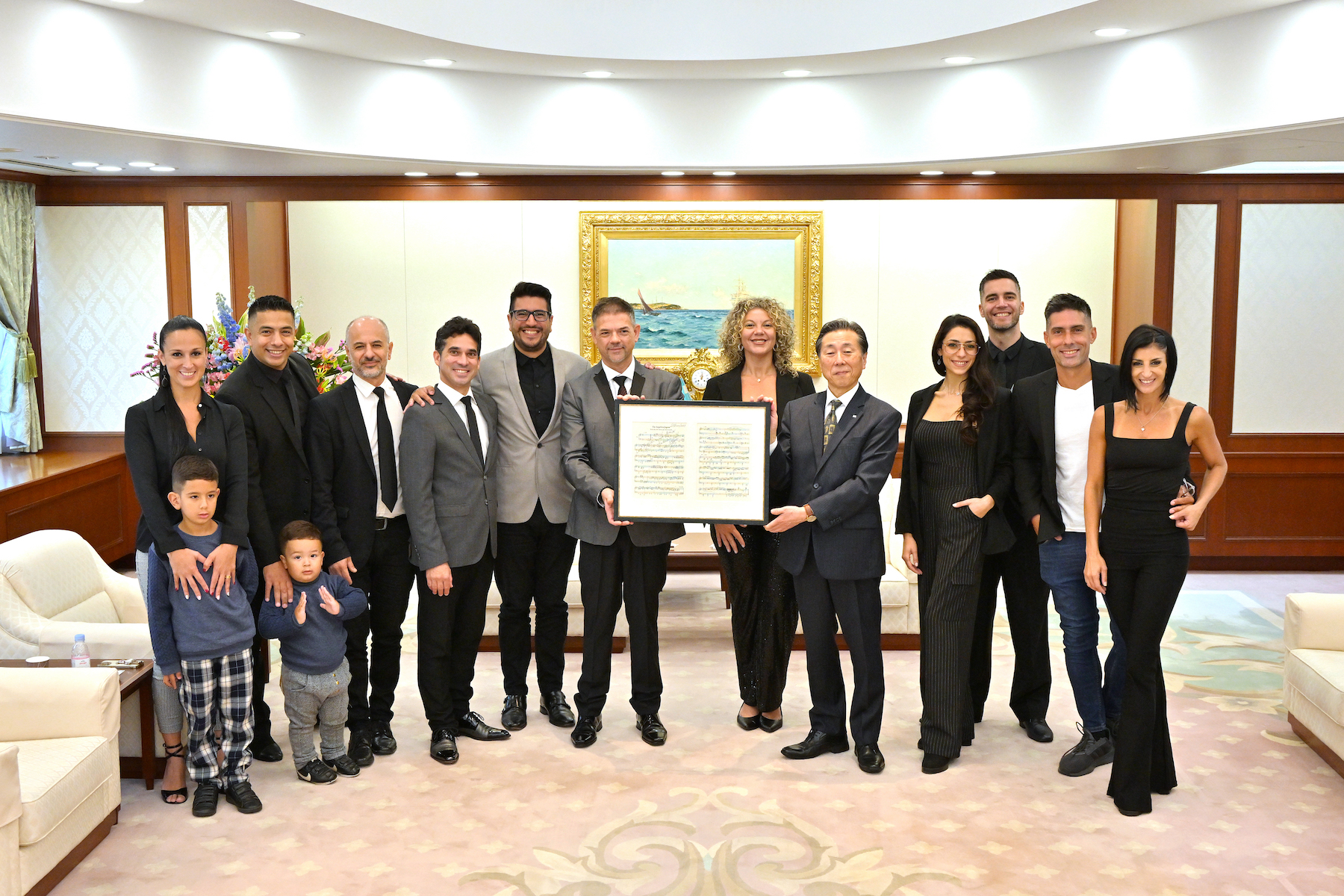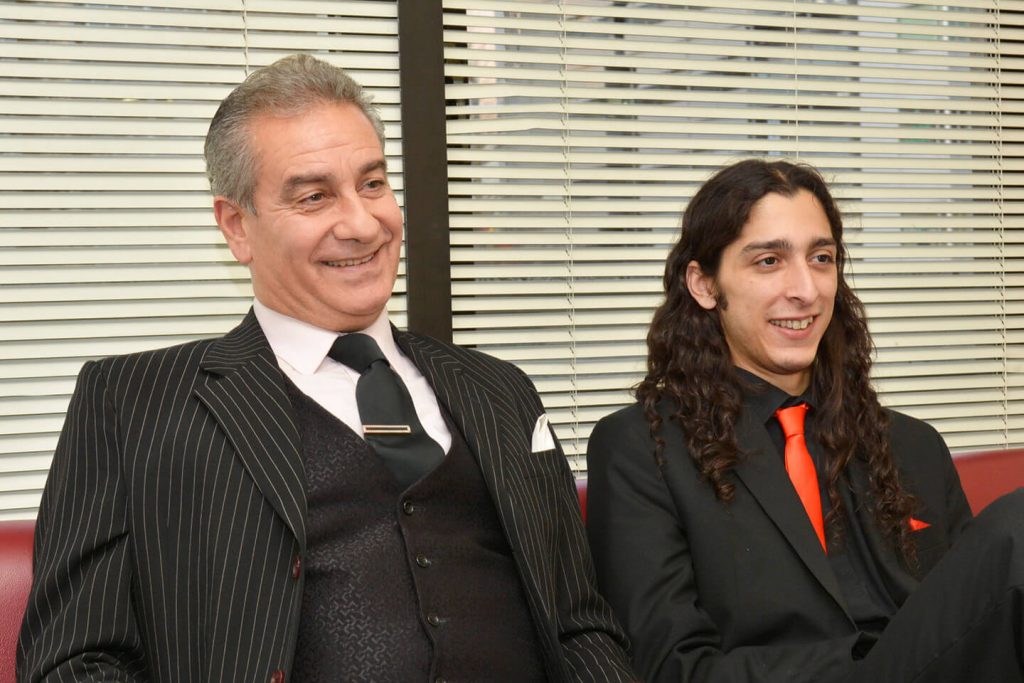
Interview with Facundo Lazzari and Fernando Rodas
Min-On: Please share impressions from your first Japan tour.
Facundo Lazzari: So far, we have been deeply moved by the enthusiastic support and applause from the wonderful Japanese audiences at every venue. It has been an absolutely delightful experience for us to perform in front of these joyful audiences.
Min-On: Since the launch of the Min-On Tango Series in 1970, a number of acclaimed tango artists, including your grandfather, the maestro Carlos Lazzari, have visited Japan. Have you heard anything about their experiences firsthand?
Fernando Rodas: Yes, of course. A Japan tour for the Min-On Tango Series is a very important event for any tango artist in Buenos Aires. All the members of La Juan D’Arienzo are participating in this tour with a full sense of appreciation.
Min-On: The D’Arienzo sound is very popular among tango fans around the world. Do you feel any pressure when performing the repertoire of the legendary D’Arienzo orchestra?
Lazzari: Indeed. But often the reverse is true, too. We are always excited to keep alive the unmistakable and popular style of the D’Arienzo sound.
Rodas: I feel the other way around. I am always nervous, trying to perform my very best. Fernando and the band members are all quite young, so perhaps their youthful energy allows them to shrug off some of the pressure.
Min-On: When and how did you start singing?
Rodas: I don’t remember exactly, but I was born in Buenos Aires as the youngest of four brothers. Actually, everyone around me, including my brothers, were musicians and singers of folk music—I just naturally started singing with them. Then around the age of 14, I started singing tango.
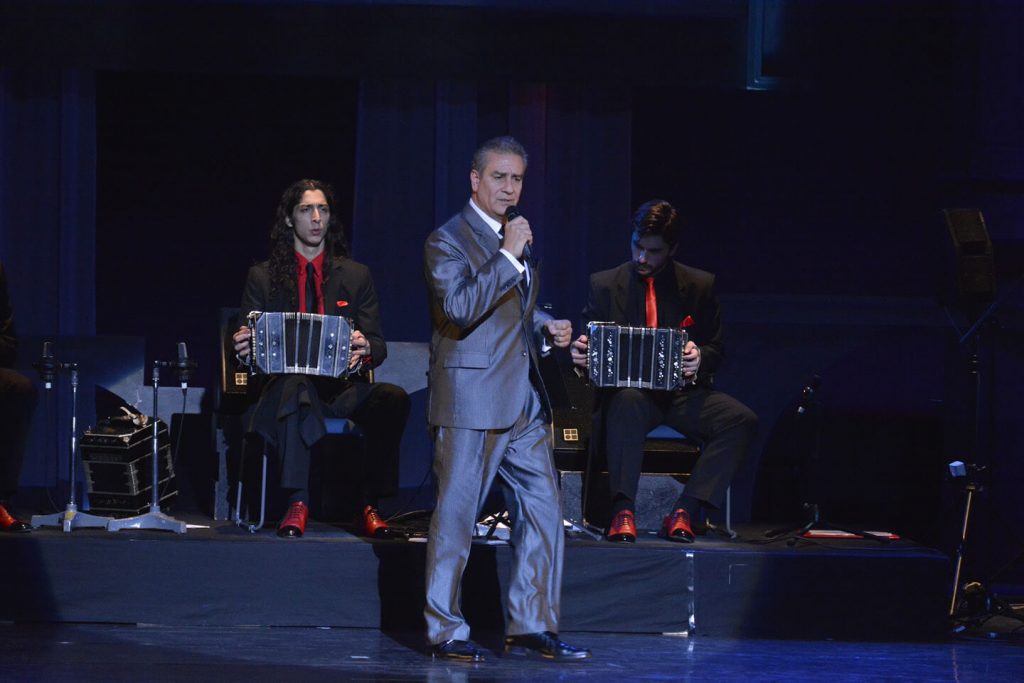
Min-On: How about you, Mr. Lazzari?
Lazzari: I started playing the bandoneon when I was 18.
Min-On: I heard you were interested in rock ‘n’ roll before that. What sparked your interest in tango?
Lazzari: When I was a teenager, I liked to write poetry. My grandfather discovered this and told me I should listen to tango. At the time, tango was considered music for older people, with themes that drew on collective life experiences. It’s true that tango resonates with older people who can relate to these themes. I was 17 years old, but after listening to a variety of tango music, I became fascinated by the D’Arienzo sound and the bandoneon.
Min-On: How did your grandfather initiate you into the technical mysteries of the bandoneon and the D’Arienzo style?
Lazzari: He was not the type to verbally explain tango in detail. He was always extremely strict with his bandoneon pupils—including myself. That was his style as a teacher. At home, on the other hand, he was a relaxed and kind grandfather. Yet he never played the bandoneon for his family. As a professional artist, he constantly badgered me to manage his arrangements in detail. Although I sometimes argued with him, I deeply admired him as a maestro of the bandoneon and the D’Arienzo sound.
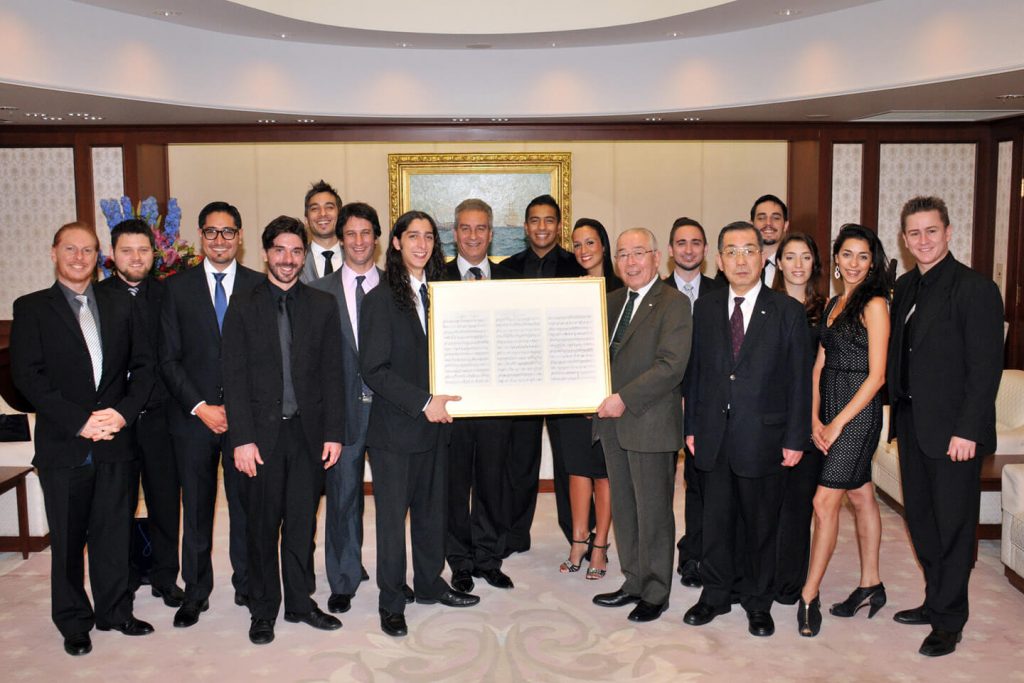
Min-On: Mr. Rodas, as a singer for La Juan D’Arienzo, how do you feel about the D’Arienzo sound?
Rodas: D’Arienzo’s compositions are all very special. But they are also difficult to sing given the rhythmical variation—the fast and slow tempos. They are challenging pieces, not only for a singer but for any musician or dancer.
Min-On: You composed a new piece entitled “Eternal Cherry Blossoms,” and presented it to the founder of Min-On, Dr. Ikeda. Would you share your thoughts on the composition with us?
Lazzari: I read an essay written by Dr. Ikeda about the cherry trees grown in the yard of his boyhood Tokyo home. The daily bombing during the war transformed Tokyo into a burned-out ruin, and the cherry trees were lost. I was touched by this story—the trees’ blossoms symbolized joyful memories of more peaceful days. I composed the piece “Eternal Cherry Blossoms” as a prayer for lasting peace in the world.


